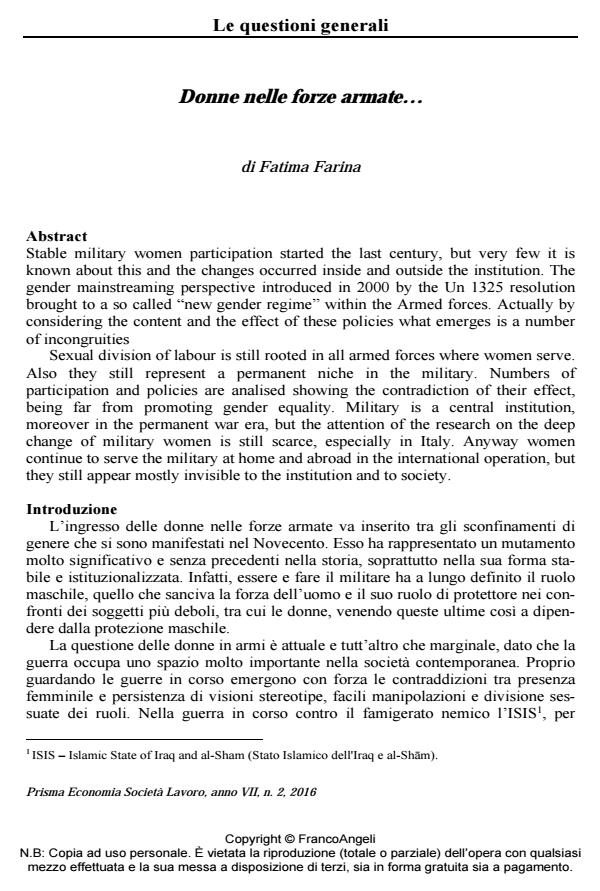Donne nelle forze armate..
Titolo Rivista PRISMA Economia - Società - Lavoro
Autori/Curatori Fatima Farina
Anno di pubblicazione 2017 Fascicolo 2016/2
Lingua Italiano Numero pagine 16 P. 15-30 Dimensione file 245 KB
DOI 10.3280/PRI2016-002002
Il DOI è il codice a barre della proprietà intellettuale: per saperne di più
clicca qui
Qui sotto puoi vedere in anteprima la prima pagina di questo articolo.
Se questo articolo ti interessa, lo puoi acquistare (e scaricare in formato pdf) seguendo le facili indicazioni per acquistare il download credit. Acquista Download Credits per scaricare questo Articolo in formato PDF

FrancoAngeli è membro della Publishers International Linking Association, Inc (PILA)associazione indipendente e non profit per facilitare (attraverso i servizi tecnologici implementati da CrossRef.org) l’accesso degli studiosi ai contenuti digitali nelle pubblicazioni professionali e scientifiche
Stable military women participation started the last century, but very few it is known about this and the changes occurred inside and outside the institution. The gender mainstreaming perspective introduced in 2000 by the Un 1325 resolution brought to a so called "new gender regime" within the Armed forces. Actually by considering the content and the effect of these policies what emerges is a number of incongruities. Sexual division of labour is still rooted in all armed forces where women serve. Also they still represent a permanent niche in the military. Numbers of participation and policies are analised showing the contradiction of their effect, being far from promoting gender equality. Military is a central institution, moreover in the permanent war era, but the attention of the research on the deep change of military women is still scarce, especially in Italy. Anyway women continue to serve the military at home and abroad in the international operation, but they still appear mostly invisible to the institution and to society.
Fatima Farina, Donne nelle forze armate.. in "PRISMA Economia - Società - Lavoro" 2/2016, pp 15-30, DOI: 10.3280/PRI2016-002002